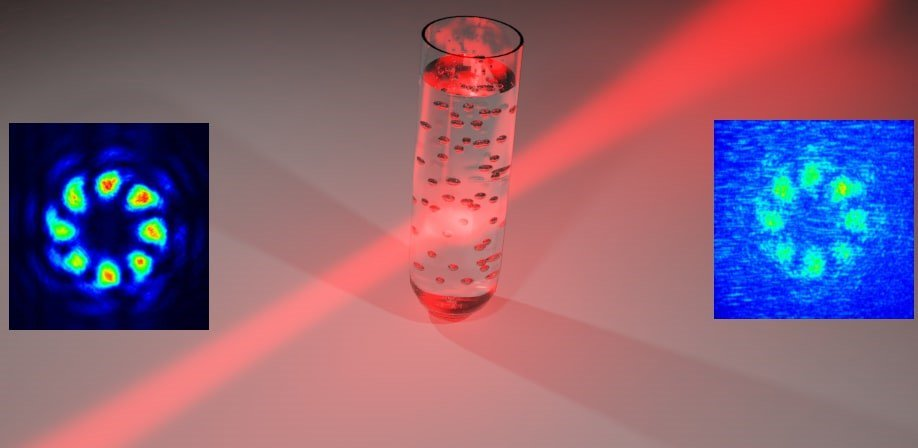Jul 14 2020
When light is propagated through any form of medium—whether a biological tissue or free space—it tends to get scattered.
 Vector vortex beam before (left) and after (right) scattering process in latex bead solution. Image Credit: I. Gianini, Sapienza University of Rome.
Vector vortex beam before (left) and after (right) scattering process in latex bead solution. Image Credit: I. Gianini, Sapienza University of Rome.
Resistance to scattering is a general requirement for imaging systems and for communications. Structured light, which uses projected patterns, is impervious to scattering, and has thus evolved as a multipurpose tool. Specifically, modes of structured light that carry orbital angular momentum, or OAM, have attracted a great deal of interest for use in biomedical imaging.
OAM can be described as an internal characteristic of light that imparts a typical doughnut shape to the spatial profile. It is also possible to structure the polarization profile of the OAM modes of light.
When a pair of OAM modes is superimposed, it results in a vector vortex beam (VVB). This VVB is defined by a doughnut intensity distribution in the cross-section of the beam, and also with spatially variant polarization. VVBs are believed to be beneficial and appropriate for quantum applications in the field of medical technology.
An Innovative Cancer Scanner
Now, an international research team, working under the guidance of the European Union’s FET-OPEN project Cancer Scan, has published a detailed review of VVB transmission in scattering media. The project proposes to create a new, radically unified technological idea of biomedical detection, deploying innovative ideas in the field of quantum mechanics and quantum optics.
The latest idea is built on combined transmission and detection of photons in a three-dimensional (3D) space of entanglement, orbital angular momentum, and hyperspectral properties. At the theoretical level, such elements can help develop a scanner that is capable of screening cancer and detecting this anomaly in a single scan of the body, without posing any dangers of radiation.
As described in the new report, the researchers used a versatile platform to create Gaussian beams and VVBs, and analyzed their propagation via a medium that imitates the traits of biological tissues. The researchers were able to demonstrate and examine the degradation of the spatial profile as well as the polarization pattern of the varying modes of light.
Ready, Aim, Scatter
The authors informed that spatial profiles for both VVBs and Gaussian beams go through a sudden change because the concentration of the medium rises further than 0.09%—an abrupt swift decrease in contrast. The study authors also observed that this change was caused by the presence of an even background induced by the scattered parts of the beams.
When the researchers investigated the polarization profiles, they discovered that the behavior of VVBs is considerably different from that of the Gaussian beams. The scattering process does not affect the uniform polarization pattern presented by Gaussian beams.
On the other hand, VVBs present an intricate distribution of polarization on the transverse plane. The researchers noticed that a part of the VVB signal turns out to be fully depolarized upon traveling through the scattering media; however, its structure is preserved by a part of the signal.
This understanding of how the interaction with scattering media can influence the behavior of structured OAM light brings researchers one step closer to exploring its mode of interaction with biological tissues.
The researchers are hoping that their detailed analysis will trigger more investigations into the impacts of light-scattering tissue-mimicking media, to improve the search for novel biomedical detection technology.
Journal Reference:
Gianani, I., et al. (2020) Transmission of vector vortex beams in dispersive media. Advanced Photonics. doi.org/10.1117/1.AP.2.3.036003.
Source: https://spie.org